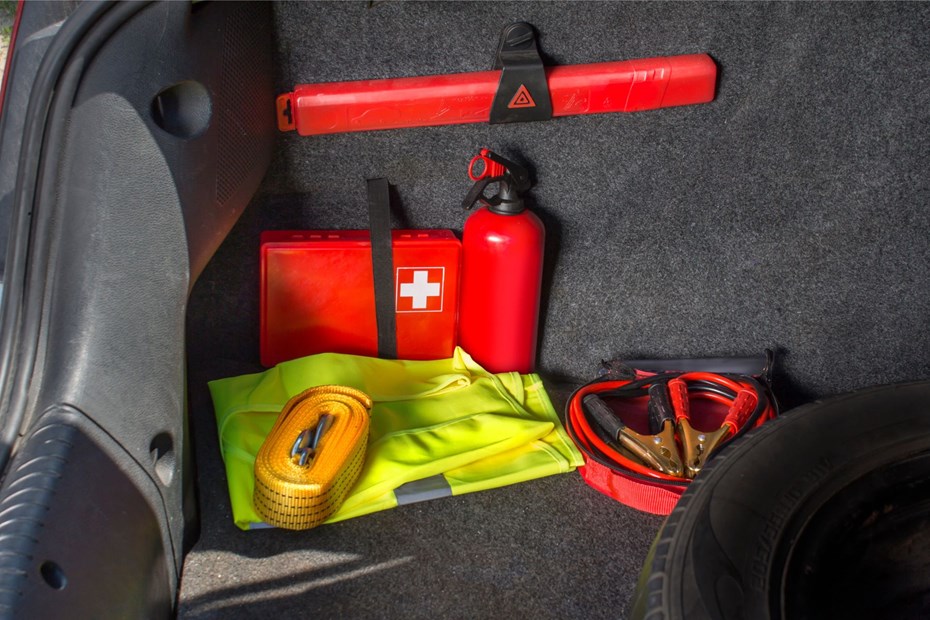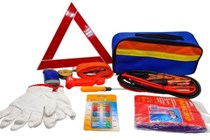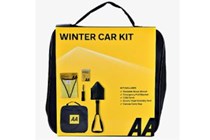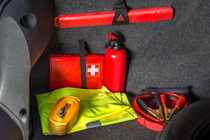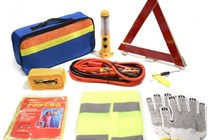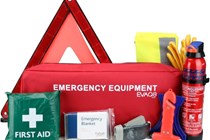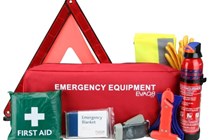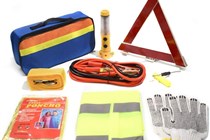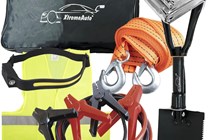Buying car emergency kits is a little like arranging car insurance. You hope you never need it, but it’s good to know that it’s there as part of your winter car checks. It’s also fair to say that you can only really judge the quality of a car emergency kit when you absolutely need it. And when the UK is hit with a cold snap which can be followed by sudden snow, the necessity for such a kit only increases.
An emergency kit is designed to sit in your car boot and should contain everything you need to stay safe in the event of an accident or breakdown. Don’t confuse emergency kits with first aid kits. Some emergency kits include them and turn your car into an emergency response vehicle. But emergency kits are primarily for breakdowns rather than injuries.
There’s nothing that exciting about a car emergency kit. They’re designed to stay in the boot, ready to spring into action in the event of a breakdown or collision. It’s the kind of product you don’t want to use, but you’ll be glad it’s there if you do. Don’t expect the individual items to offer longevity or be fit for heavy-duty use. They’re mainly designed to get you out of trouble should, for example, you get stuck during a heavy snowfall. If you lose control after unexpectedly coming across black ice, some of the equipment may save you in the aftermath.
The best car emergency kits at a glance:
Editor’s choice: Roadside Assistance Car Emergency Kit – Buy now from Amazon UK
Best on a budget: TourKing Emergency Kit – Buy now from Amazon UK
Best for winter: Xtremeauto Cold Weather Kit – Buy now from Amazon UK
By their nature, these kits are designed to be small, portable and affordable. Buying individual items of higher quality is an alternative route, but you will pay more, and they’re likely to take up more space in the car. So here are some of the kits that we liked.
The best car emergency kits
Editor's pick
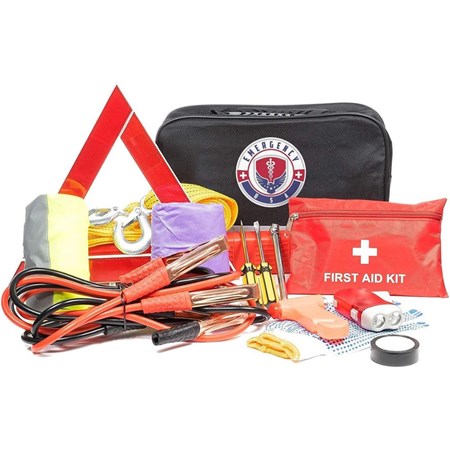

The pack contains a first aid kit, reflective warning triangle, safety vest, pair of gloves, tow rope, safety hammer with a seatbelt cutter, LED torch, adhesive tape, raincoat, tyre pressure gauge, screwdriver, jump leads and an emergency blanket.
Pros
- Covers most bases
- Compact bag
Cons
- Some products feel cheap
Best value car emergency kit
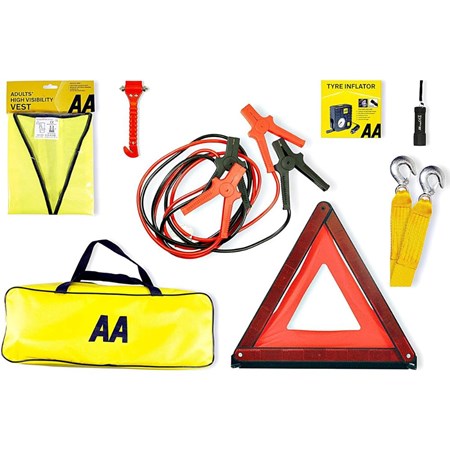

Pros
- Comprehensive kit
- Useful emergency tools
Cons
- No emergency blanket
Best budget emergency car kit
The pack contains jumper cables, a reflective warning triangle, a tow rope, a four-in-one flashlight, a pair of gloves, a safety hammer, a poncho, and a reflective vest. There’s no first aid kit, so this will need to be bought separately.
Pros
- Affordable kit
- Lots of equipment
Cons
- No first aid kit
Best value winter emergency car kit
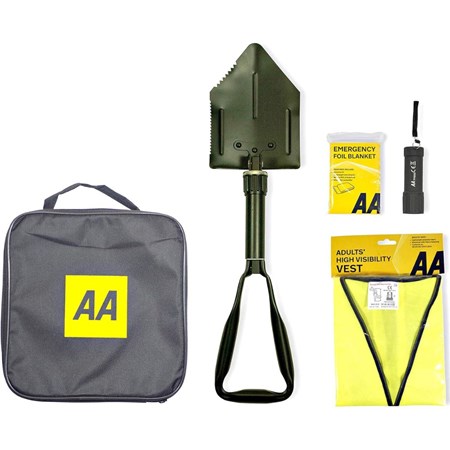

You may also want to carry a hat, coat and some chocolate bars. Good luck resisting the temptation to eat the choccies on the way home from the office.
Pros
- Ideal winter driving kit
- Contains snow shovel
Cons
- Shovel is quite small
Best kit with a fire extinguisher
Among the items included are a warning triangle, first aid kit, emergency blanket, safety hammer, torch, hi-viz vest and a powder fire extinguisher.
Pros
- Includes a fire extinguisher
- Emergency foil blanket included
Cons
- No repair tools included
Best winter emergency car kit
Unfortunately, you don't get a first aid kit which is a bit of a miss in what is already a fairly comprehensive kit.
Pros
- Tow rope included
- Foil blanket and shovel in the pack
Cons
- No first aid kit
Most comprehensive emergency car kit
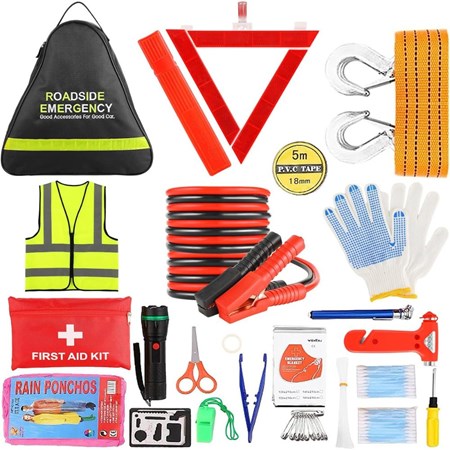

You get all sorts of items including a torch, first aid kit, tow rope, jump leads and a plethora of other useful things needed if you find yourself in an emergency situation. The build quality of the equipment is not high, but you can't expect things to be made like a Swiss Army Knife in an emergency pack at this price point.
Pros
- Very comprehensive level of equipment
- Compact enough to hide away in the boot
Cons
- No snow shovel included
Things to remember with car emergency kits
The RAC advises a list of things which should always be in your car. Most of them are things which should already be in your car at the time of purchase, a useable spare tyre, a tyre jack or a user’s manual, for example. There are also many things on the list which you’ll likely have in your car like sunglasses, an umbrella and, in the colder months, a jacket. However, we won’t all have things like WD-40, a tool kit or first aid kits. These may seem like overkill, but they could help save your life or someone else’s if there was an accident – which is more likely during cold snaps.
It’s always important to have fresh drinking water in your vehicle, and if you know you’re going to be going off somewhere remote, it’s probably a good idea to take some non-perishable food, just in case. Also, it doesn’t hurt to have a good old-fashioned A-Z under the passenger seat. Smartphones are great, providing you have signal, data and battery. But a paper map just might help get you out of trouble.
Be aware that if you do go for a kit that doesn’t include certain items, it may be a good idea to make up for it with separate items which you may have on hand. These include torches or shovels. Also, take care when travelling abroad, as you might need to invest in a European driving kit. A GB sticker, breathalyser kits and a fire extinguisher could be required, depending on your destination.
Aaron Hussain is a commercial content writer at Bauer Media writing for Parkers and CAR. He is obsessed with classic cars and anything with a fascinating story to tell.
Sign up for the Parkers Newsletter to keep up to date with more of the latest reviews, news, and recommendations from the Parkers team.
Just so you know, whilst we may receive a commission or other compensation from the links on this website, we never allow this to influence product selections – read why you should trust us
Just so you know, we may receive a commission or other compensation from the links on this website - read why you should trust us.


